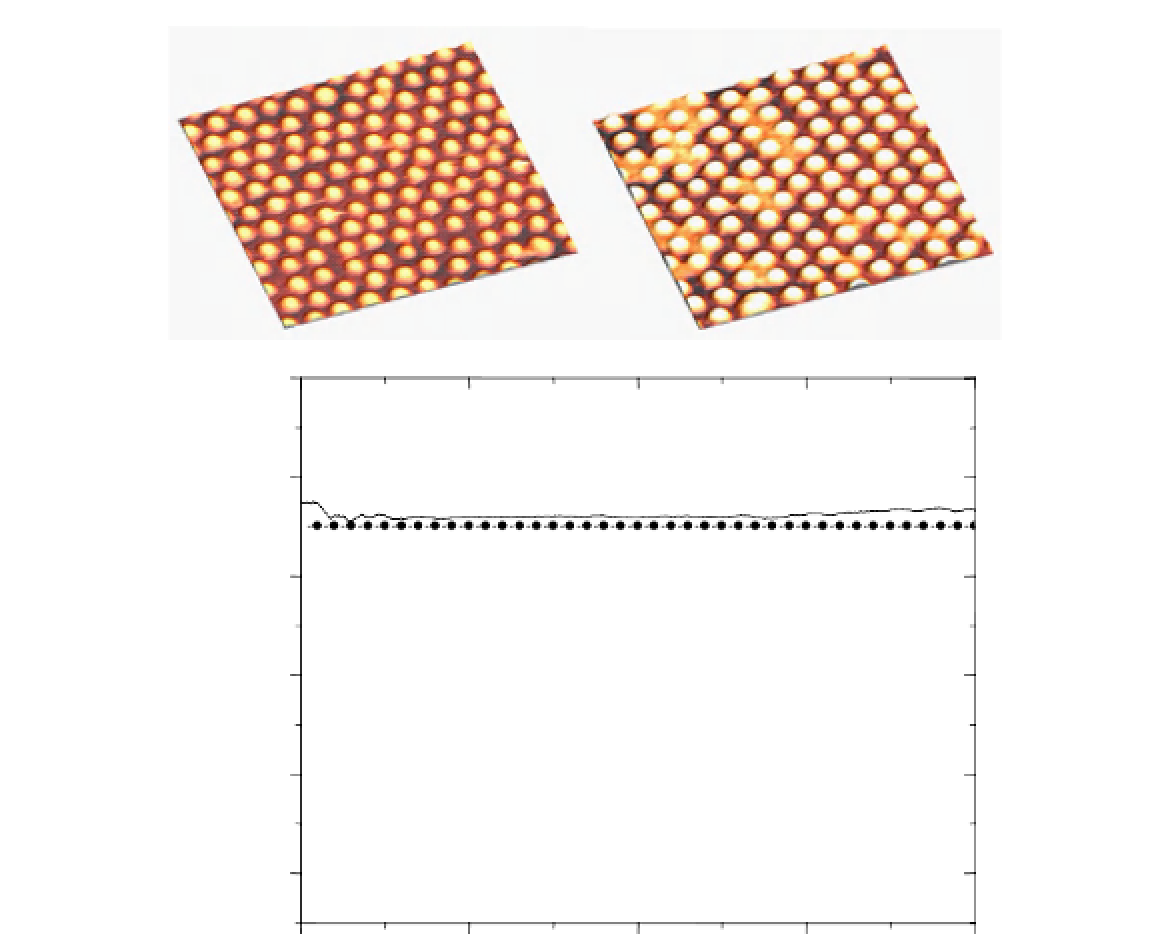Biomedical Engineering Reference
In-Depth Information
(a)
(b)
1
µ
m
1
µ
m
(c)
5
Calculated
Featureless ETPTA
Experimental
Spherical cap
Hemispherical cap
4
3
2
1
0
400
500
600
700
800
Wavelength (nm)
FIGURE 12.18
(a, b) AFM images of templated polymer moth-eye arrays with different nipple depths. (c) Experimental
(solid) and simulated (dotted) specular optical reflectance at normal incidence obtained from a flat ETPTA control sample, a
moth-eye nipple array with 110-nm spherical caps, and a nipple array with 180-nm hemispherical caps. Reprinted with permis-
sion from
Appl Phys Lett
91
(2007), 101108. Copyright 2007, American Institute of Physics.
ARCs can almost be double that of their unitary
counterparts. To generate binary ARCs, double-
layer, non-close-packed colloidal crystals are
first assembled by using the spin-coating tech-
nology. The polymer matrix is then partially
removed and the exposed silica spheres are dis-
solved in a 2% hydrofluoric-acid aqueous solu-
tion, leaving behind a polymer dimple-nipple
array, as shown by the side-view SEM image in
Figure 12.19
a. The resulting periodic binary
structure can then be replicated into a thin layer
of polymer (e.g., ETPTA) on a glass substrate
using the same templating approach as
described previously. From the reflectance
measurements in
Figure 12.19
b, it is evident
that the binary ARC shows improved antireflec-
tive performance over the unitary hemispheri-
cal ARC for most of the visible wavelengths.

























